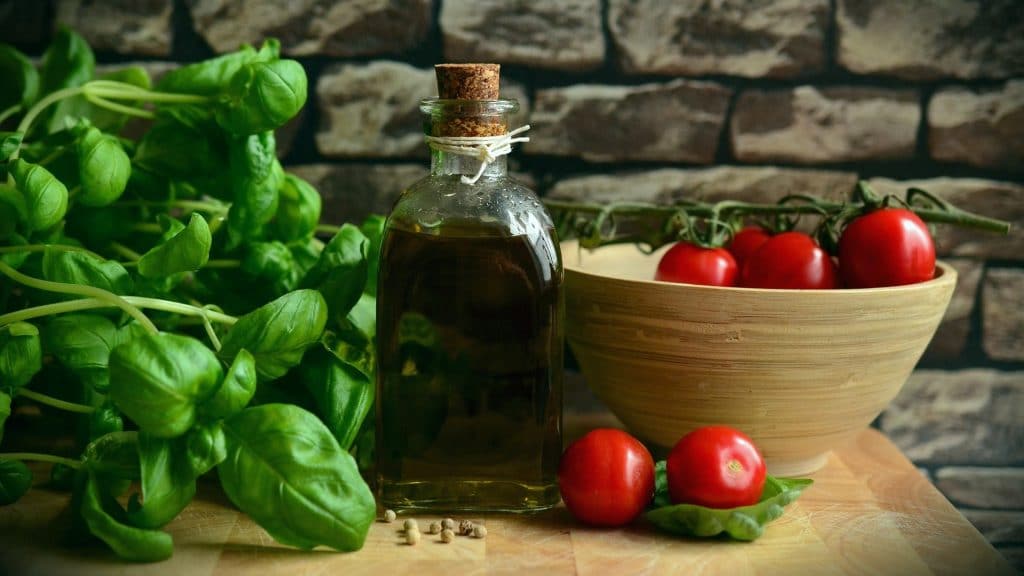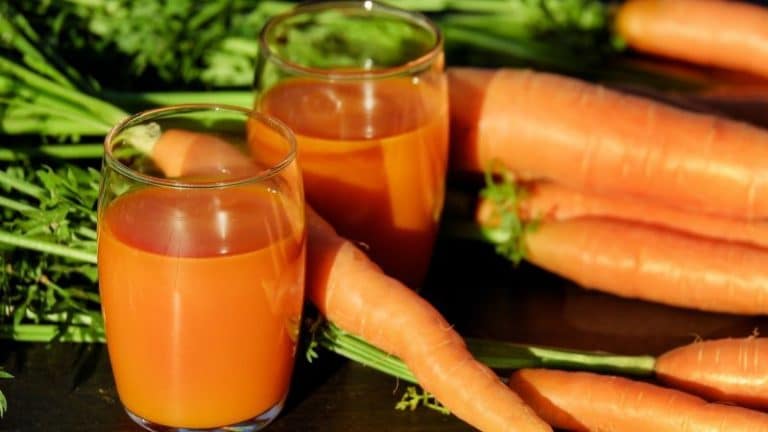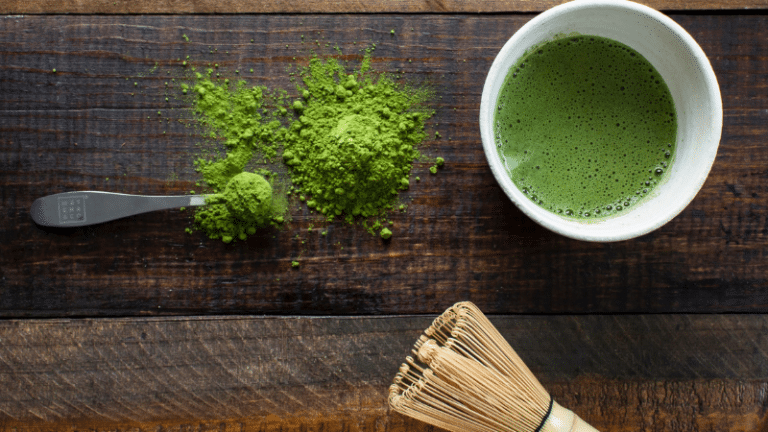24 Vitamin E Foods to Fight Free Radicals in 2024

Vitamin E is essential for our health as it plays numerous crucial roles in the body. One of its important functions is protecting us from harmful free radicals. The best way to keep the optimal levels of this vitamin in your body is to include vitamin E foods in your eating plan. That’s why we have compiled a list of the best sources of this nutrient.
What Is Vitamin E?
Vitamin E is a fat-soluble vitamin responsible for many metabolic processes. It includes eight compounds, but only one form, alpha-tocopherol, is suitable for human needs.
Apart from being a powerful antioxidant, another vitamin E function involves contributing to our immune system and protecting our skin from harmful effects. Therefore, it is often used as an ingredient of cosmetic products aimed to nourish our skin. An example of that is vitamin E cream. Generally speaking, vitamin E is a critical vitamin necessary for the proper functioning of various organs.
Vitamin E Benefits
There are numerous health benefits that vitamin E can bring us. For starters, it protects our body from free radicals and reduces the damage they cause to our cells.
Other benefits of vitamin E include shielding our body from the adverse effects of environmental factors, such as:
- ultraviolet rays
- air pollution
- cigarette smoke
In addition, it maintains our skin healthy by protecting it from:
- sun damage
- aging
- inflammation
It is presumed that vitamin E can have a similar effect on hair health, but the importance of vitamin E for hair is still being studied.
Several studies have examined the role of vitamin E in the prevention of some severe health conditions, such as heart disease and cancer. For example, according to research on the relationship between vitamin E and coronary artery disease, proper vitamin E dosage can slow down the development of heart disease.
There are also numerous studies about the role of vitamin E in preventing and treating eye disorders. For example, a study from 2015 showed that this vitamin might decrease the risk of age-related cataracts.
What’s more, many people use vitamin E for scars, too. However, there is little clinical evidence that it reduces the appearance of scars.
Vitamin E Foods
A wide range of foods contains vitamin E. It is especially abundant in nuts, seeds, and vegetable oils. This vitamin is also added to some food products, such as breakfast cereals. Since it’s best to meet your daily needs of vitamin E through a balanced diet, below, you can find some of the richest sources of this nutrient, which you should try to add to your eating plan.
Wheat Germ Oil
Wheat germ oil is an excellent source of vitamin E, as one tablespoon offers 135% of the vitamin’s DV. However, since this oil loses its nutritional benefits when heated, it’s recommended to use it in salad dressings or marinades. As for the health benefits, this oil lowers LDL cholesterol, boosts energy, lowers stress, and prevents hair loss.
Sunflower Oil
In addition to using pure vitamin E oil for skin care, you should add some rich sources of this vitamin to your diet. Notably, one tablespoon of sunflower oil can cover 29% of the vitamin’s DV. Apart from the oil’s vitamin E benefits for the skin, it also boosts energy levels.
Safflower Oil
One tablespoon of safflower oil provides 24% of vitamin E’s DV, making this oil one of the vitamin E food sources. You can prepare various dishes with safflower oil as it has a neutral taste. Besides using it to grill or stir-fry foods, you can also add it to salad dressings, dips, and sauces.
Corn Oil
One tablespoon of corn oil offers 10% of vitamin E’s DV. In addition to being one of the foods with vitamin E, this oil is an excellent source of good fats. However, consume corn oil in moderation because it is packed with calories. Additionally, it contains linoleic acid, phytosterols, and it may decrease your risk of heart disease.
Soybean Oil
Soybean oil is not as rich in vitamin E as other oils, but it is considered a good vitamin E food. Namely, one tablespoon of soybean oil will provide you with 6% of the vitamin’s DV. Moreover, it is a fantastic source of vitamin K, and it is rich in heart-healthy fats. Also, it may support bone health.
Sunflower Seeds
Sunflower seeds belong to foods rich in vitamin E, too. For example, if you eat one ounce of dry-roasted sunflower seeds, you will cover 50% of the vitamin’s DV. Furthermore, sunflower seeds are high in folate, thiamin, and vitamin B6. Sunflower seeds also have a high content of manganese, copper, and selenium.
Almonds
Many nuts are generally excellent sources of this vitamin, and almonds, in particular, belong to the group of vitamin E foods for hair. Notably, one ounce of almonds can cover 34% of vitamin E’s DV. In addition, these nuts are a rich source of minerals, such as manganese, copper, phosphorus, and magnesium.
Hazelnuts
Hazelnuts also belong to foods high in vitamin E. You will get 22% of vitamin E’s DV from one ounce of hazelnuts. In addition, these nuts are a great source of thiamin, manganese, and copper. What’s more, they are thought to lower cholesterol, reduce inflammation, support healthy bowel movement, and reduce weight gain.
Peanuts
Peanuts are good sources of vitamin E since one ounce of these nuts can provide you with 16% of vitamin E’s DV. Moreover, they contain various minerals, such as magnesium, manganese, and phosphorus.
Peanut Butter
Another food high in vitamin E is peanut butter. Notably, one tablespoon of smooth peanut butter (reduced fat) covers 7% of the vitamin’s DV. What’s more, it is high in protein and magnesium, which aid in protecting the heart and managing body weight and blood sugar.
Sweet Potatoes
Sweet potatoes are yet another great addition to foods that contain vitamin E, as one medium sweet potato cooked with salt and without skin can cover 8% of the vitamin’s DV. This veggie is also a great source of vitamin A, vitamin C, iron, potassium, zinc, thiamin, vitamin B6, and vitamin D. As for the health benefits, sweet potatoes might help lower the risk of cancer, control blood sugar, lower LDL cholesterol, and help you with weight loss.
Spinach
Spinach is a highly nutritious veggie as it contains several vitamins and minerals. As half a cup of boiled spinach will provide you with around 10% of vitamin E’s DV, we can see why it is cited as food rich in vitamin E. Moreover, spinach is rich in vitamin A, vitamin K, folate, manganese, magnesium, and iron.
Turnip Greens
Besides spinach, vitamin E is also found in other green leafy vegetables, such as turnip greens. You will get 14% of the vitamin’s DV from one cup of cooked and chopped turnip greens. In addition, this veggie is a rich source of vitamin A and vitamin K, and it may reduce anemia and help with digestion, sleep, and mood.
Broccoli
Broccoli is part of the foods containing vitamin E, too. For example, half a cup of boiled and chopped broccoli can provide you with 6% of vitamin E’s DV. Additionally, broccoli is rich in niacin, calcium, riboflavin, iron, thiamin, phosphorus, zinc, and potassium. Another one of their benefits is keeping the bones healthy.
Tomato
Tomatoes are yet another excellent food with vitamin E. Notably, one cup of canned and crushed tomatoes covers 15% of the vitamin’s DV. In addition to this, tomatoes are a great source of lycopene, reducing the risk of certain types of cancer and promoting heart health. They are also high in vitamin C, potassium, vitamin K, and folate.
Butternut Squash
How can I get vitamin E naturally? Eating butternut squash is one of the answers. Astoundingly, one cup of cooked butternut squash cubes will cover 14% of vitamin E’s DV. Moreover, it is rich in vitamin B6 and may slow down or even prevent cellular damage and lower inflammation, thus reducing the risk of chronic diseases.
Mangoes
Mangoes are packed with vitamins, so it’s a good idea to add this fruit to your diet, as it is also one of the vitamin E fruits. Namely, a cup of mango slices covers 10% of the vitamin’s DV. Moreover, this type of fruit is high in vitamin C, vitamin A, and vitamin B6, and it is the perfect fruit for controlling high cholesterol levels.
Avocados
In one avocado, you will get 21% of vitamin E’s DV. In addition to eating this healthy fruit, you can use it to make a nourishing hair mask, an alternative to vitamin E oil for hair. What’s more, avocados are rich in folate, fiber, and potassium, which help the heart and cardiovascular system.
Blackberries
Which fruit is rich in vitamin E? It’s safe to say that blackberries are rich in this vitamin. One cup of raw blackberries can cover 9% of the vitamin’s DV. Furthermore, these berries are a fantastic source of vitamin C and vitamin K. As for minerals, blackberries are exceptionally high in manganese.
Kiwi Fruit
Kiwi fruits are a great addition to your eating plan, as they are foods high in alpha–tocopherol. For instance, you will get 14% of vitamin E’s DV from one cup of sliced kiwi fruit. Moreover, it is an excellent source of vitamin K and vitamin C.
Cranberries
If you look for tocopherol in food, cranberries are an option for you. One cup of chopped cranberries serves 7% of vitamin E’s DV. In addition, these berries offer many health benefits thanks to the nutrients they contain. For instance, they are an excellent source of vitamin C and manganese.
Apricots
Apricots are another type of fruit belonging to vitamin E rich foods. Notably, one cup of apricot halves covers 7% of the vitamin’s DV. In addition, apricots are high in vitamin C, vitamin A, potassium, and antioxidants. What’s more, they hydrate, protect the liver, boost skin health, and promote eye health.
Raspberries
Raspberries are yet another delicious alpha–tocopherol food, as one cup of these berries covers 6% of the vitamin’s DV. What’s more, they are rich in various vitamins and minerals, like vitamin C, vitamin K, and manganese. Raspberries lower blood pressure and may prevent heart disease and stroke.
Eggs
Are eggs high in vitamin E? They most certainly are. In fact, a serving of three large eggs covers 8% of the vitamin’s DV. Apart from being sources of vitamin E, eggs contain riboflavin, vitamin A, calcium, potassium, manganese, and folate. They also contain zinc.
Recommended Daily Intake
The recommended daily values for all the nutrients, including vitamin E, are provided in the Dietary Reference Intakes, developed by the Food and Nutrition Board (FNB). The Recommended Dietary Allowances (RDAs) for vitamin E are given in milligrams. As for the content of this vitamin in foods and vitamin E tablets, you can expect to find it on labels.
Below, you can see how much vitamin E you need daily. You can cover your needs through a balanced diet or by taking a vitamin E supplement. The RDAs are different depending on one’s age:
- from birth to 6 months — 4 mg
- from 7 to 12 months — 5 mg
- from 1 to 3 years — 6 mg
- from 4 to 8 years — 7 mg
- from 9 to 13 years — 11 mg
- 14+ years — 15 mg
Pregnant women should increase their daily intake of vitamin E to 15 mg, and breastfeeding women should increase it to 19 mg.
Vitamin E Deficiency
People are rarely deficient in vitamin E as this deficiency is usually related to some health condition. However, since this vitamin is fat-soluble, people with fat-malabsorption disorders are at a higher risk of developing signs of vitamin E deficiency.
Due to low levels of this vitamin, they can experience retinal degeneration leading to blindness. Generally, some of the vitamin E deficiency symptoms are:
- muscle pain or weakness
- impaired immune system
- peripheral neuropathy
A healthy diet including various foods is the best way to prevent this nutrient deficiency.
Who Should Take a Vitamin E Supplement?
Premature babies may have low levels of vitamin E, so they might benefit from vitamin supplements, which may decrease the risk of some complications.
Also, people with Crohn’s disease or cystic fibrosis may have inadequate levels of this vitamin due to their gastrointestinal problems. Therefore, they sometimes need to take supplements of water-soluble vitamin E.
In addition, abetalipoproteinemia, a rare inherited disorder characterized by poor absorption of dietary fat, can lead to vitamin E deficiency. In other words, people with this disorder may need to take vitamin E capsules.
Furthermore, people with ataxia and vitamin E deficiency (AVED) need vitamin supplements as, otherwise, they can lose the ability to walk.
Vitamin E Side Effects
Vitamin E from food can’t cause any adverse effects. On the other hand, a high intake of vitamin supplements may increase the risk of hemorrhagic stroke. In addition, it can cause:
- diarrhea
- nausea
- fatigue
- headaches
- rashes
Therefore, the FNB has provided Tolerable Upper Intake Levels for this nutrient. According to the FNB, the vitamin E dosage for adults shouldn’t exceed 1,000 mg per day.
Conclusion
Vitamin E is a powerful antioxidant that protects us from the harmful effects of free radicals. In addition, it plays a vital role in keeping our immune system strong and healthy. Therefore, it is of great importance to add rich vitamin E sources to our diet. Fortunately, there is a wide range of foods naturally high in this vitamin. Moreover, besides consuming vitamin E from food, we can use vitamin E oil to nourish our skin from the outside.
Note that supplemental vitamin E is usually recommended only to people with certain medical conditions as this nutrient deficiency may cause severe health problems. However, high doses of supplements are also dangerous, so always talk to your doctor before taking them.
FAQs
How much vitamin E should you take daily?
Vitamin E has numerous health benefits as it is one of the essential antioxidants. Therefore, you should consume a sufficient amount of this vitamin. The recommended daily intake for adults is 15 mg. It is advised to cover your daily needs of vitamin E through vitamin E foods rather than supplements. Fortunately, there are many rich sources of this critical nutrient.
Is vitamin E really bad for you?
It is not provided that your intake doesn’t exceed 1,000 mg per day. In other words, high doses of supplemental vitamin E may cause adverse effects, such as the increased risk of hemorrhage stroke. That said, there is no evidence that high vitamin E foods can negatively affect your health.
All in all, if you need to take supplements of this vitamin, always follow your doctor’s advice.
Which foods are high in vitamin E?
There is a variety of foods that are high in vitamin E. Some of the richest sources of this powerful antioxidant are nuts, seeds, and vegetable oils. For example, wheat germ oil, sunflower seeds, and almonds have high vitamin E content. In addition, green leafy vegetables and some fruits are good sources of this nutrient.
What fruits are high in vitamin E?
Several fruits contain different amounts of vitamin E. For instance, avocados are a great source of this nutrient. Also, vitamin E is found in various berries, such as blackberries and cranberries. However, fruit is not the best choice for this particular vitamin as other types of food, like vegetable oils, are much higher in vitamin E.
Which vegetables contain vitamin E?
A wide range of vegetables contain vitamin E. Generally speaking, green leafy veggies, such as spinach, swiss chard, turnip greens, and beet greens, are considered excellent sources of this vitamin. In addition, sweet potatoes and broccoli also have a fair amount of vitamin E.
Is it good to put vitamin E on your face?
Vitamin E offers many health benefits. And one of the vitamin E skin benefits includes reducing inflammation and making your skin look younger. That is to say that you can apply vitamin-enriched creams to your face. In fact, many people are satisfied with their effectiveness once they use such creams on their faces and leave them overnight.
Do eggs contain vitamin E?
Although eggs are not very high in vitamin E, they still contain a fair amount of this essential nutrient, making them a valuable addition to vitamin E foods. As a matter of fact, eggs contain small amounts of nearly all vitamins and minerals needed by the human body.






